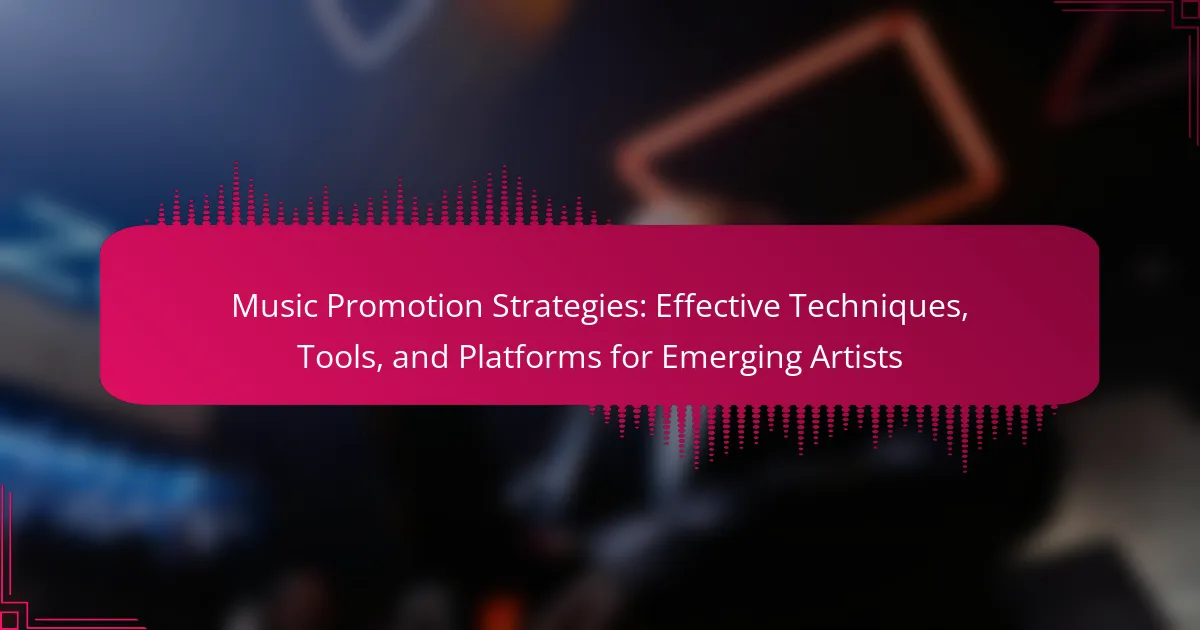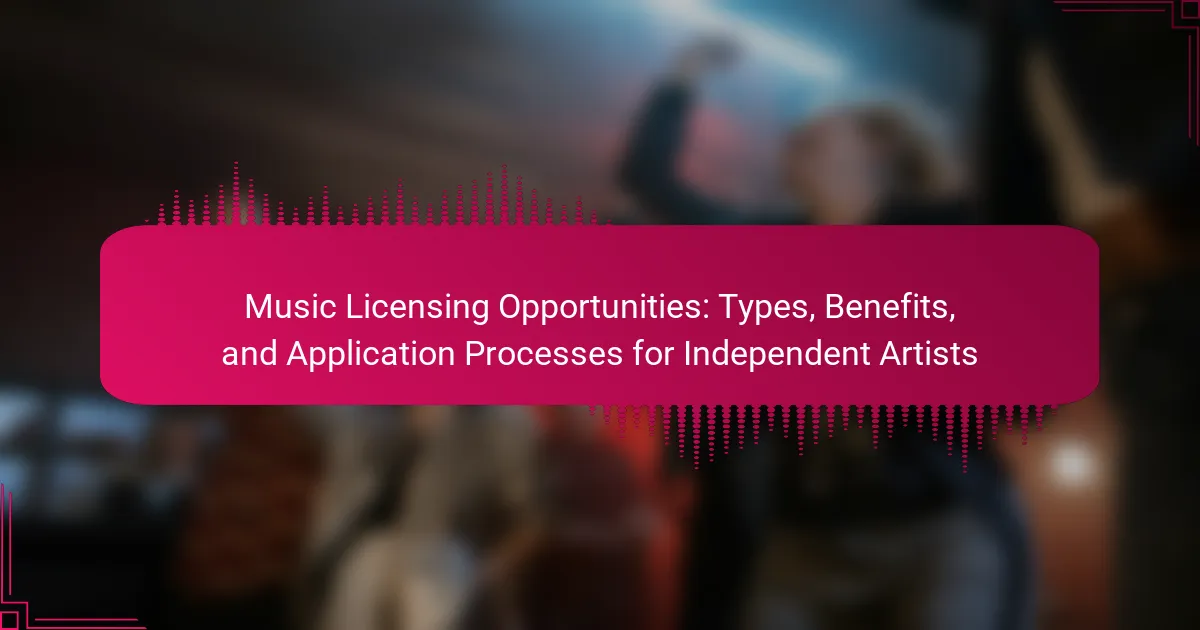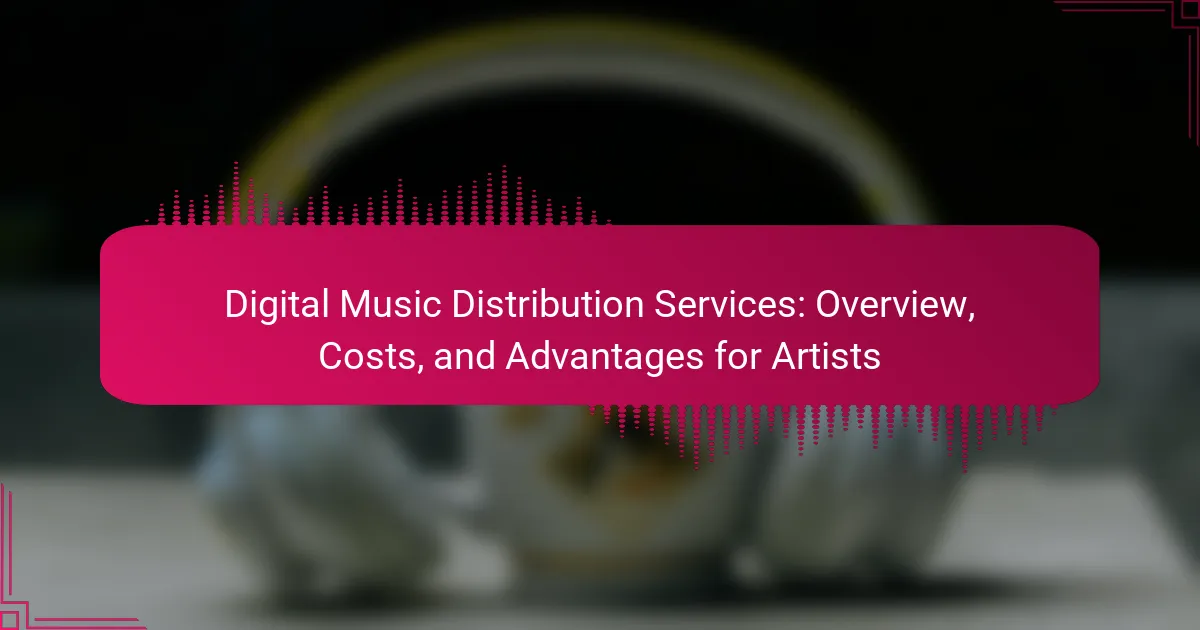Independent music distribution platforms empower artists with control over their music and revenue potential. They offer customizable distribution options, robust analytics, and marketing tools. These platforms enable direct access to various digital stores and streaming services, enhancing visibility and engagement. However, artists may face challenges such as high fees and limited marketing support, which can impact their success.

What are the key features of independent music distribution platforms?
Independent music distribution platforms offer key features such as global reach, customizable distribution options, and robust analytics. These platforms empower artists to retain rights and control over their music. They typically provide various forms of intake, including digital downloads and streaming services. Additionally, many platforms offer marketing tools and support, enhancing visibility and engagement.
How does digital distribution work for independent artists?
Digital distribution for independent artists allows them to share music through various platforms, reaching global audiences. These platforms typically offer features like royalty collection, analytics, and promotional tools. Benefits include increased visibility, control over content, and direct revenue streams. Comparisons between platforms often highlight differences in fees, distribution reach, and user interface, enabling artists to choose the best fit for their needs.
Which platforms are most popular among independent musicians?
The most popular platforms among independent musicians include DistroKid, TuneCore, CD Baby, and Bandcamp. These platforms offer unique features that cater to various distribution needs. DistroKid is known for its fast upload times and unlimited distribution for a flat fee. TuneCore provides detailed sales reports and allows artists to keep 100% of their royalties. CD Baby is recognized for its comprehensive services, including physical distribution and sync licensing. Bandcamp focuses on direct-to-fan sales, empowering artists to set their own prices. Each platform serves distinct artist requirements, enhancing their reach and revenue potential.
What tools do these platforms offer for marketing and promotion?
Independent music distribution platforms offer various tools for marketing and promotion, including social media integration, playlist placements, and analytics dashboards. These features help artists reach wider audiences and track their performance effectively. For example, platforms like DistroKid provide promotional tools that facilitate easy sharing across multiple social media channels. Additionally, some services offer pre-save campaigns to boost engagement before a release, enhancing visibility.
How do platforms handle royalties and payments?
Platforms typically manage royalties and payments through automated systems that calculate earnings based on streaming, downloads, and sales. Most independent music distribution platforms provide detailed reporting tools for artists to track their revenue.
Payments are usually processed monthly or quarterly, depending on the platform’s policy. Some platforms may offer direct bank transfers, while others use third-party payment services. Unique attributes such as minimum payout thresholds can vary between services, affecting how quickly artists receive their earnings.
Additionally, platforms may implement different royalty splits, influencing the overall income for independent artists. Understanding these aspects helps artists choose the right platform for their needs.
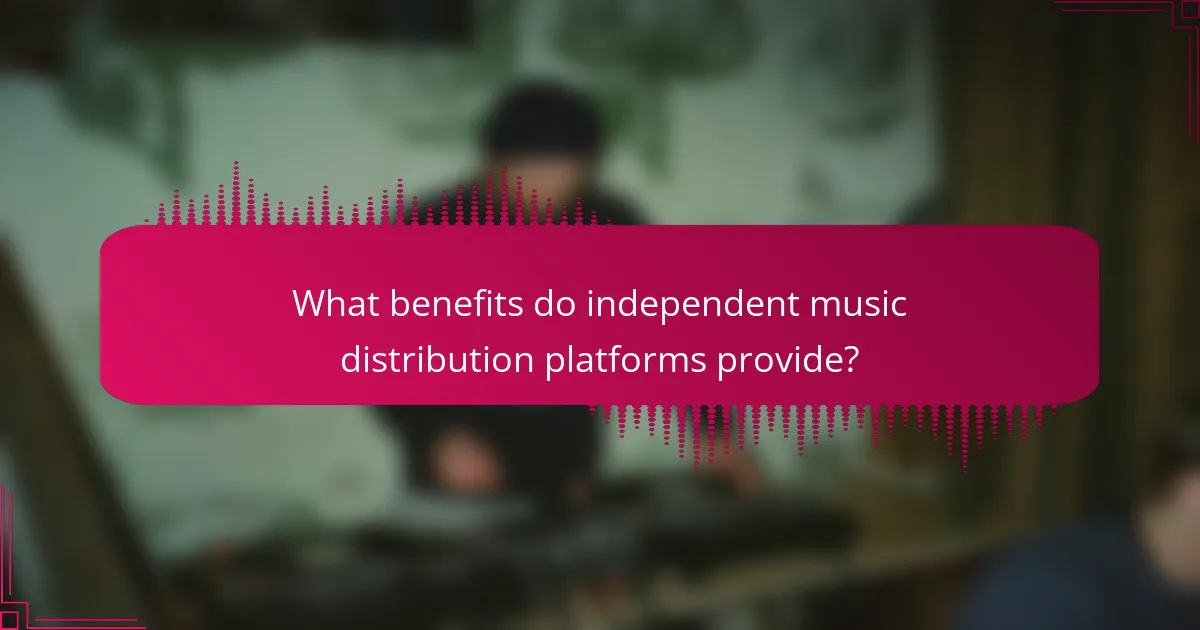
What benefits do independent music distribution platforms provide?
Independent music distribution platforms provide artists with increased control, wider reach, and higher revenue potential. These platforms enable musicians to distribute their music across various digital stores and streaming services without the need for a traditional record label.
Key benefits include direct access to analytics, allowing artists to track performance and audience engagement. They also offer flexible royalty structures, which can result in higher earnings per stream or sale. Additionally, many platforms provide promotional tools to enhance visibility, helping independent artists build their brand more effectively.
These platforms often support various formats, including singles, albums, and EPs, catering to diverse release strategies. As a result, independent musicians can maintain creative freedom while effectively monetizing their work.
How do these platforms empower artists to retain control over their music?
Independent music distribution platforms empower artists by providing tools that ensure creative control and revenue retention. These platforms allow artists to manage their music rights, set their pricing, and receive direct payments from sales and streams. Features like customizable distribution options and detailed analytics further enhance their autonomy. As a result, artists can make informed decisions about their careers without relying on traditional label structures.
What role do distribution platforms play in reaching global audiences?
Independent music distribution platforms are crucial for reaching global audiences by providing access to various streaming services. They enhance visibility, allowing artists to connect with listeners worldwide. These platforms offer features like analytics, royalty management, and marketing tools, which help independent musicians understand their audience and optimize their reach. As a result, artists can effectively promote their music and grow their fan base across different regions.
How can independent artists leverage analytics offered by these platforms?
Independent artists can leverage analytics from music distribution platforms to understand audience engagement and optimize their marketing strategies. These insights help identify listener demographics, track streaming performance, and assess the effectiveness of promotional campaigns. By analyzing data trends, artists can tailor their content and release strategies to align with audience preferences, enhancing their reach and impact.
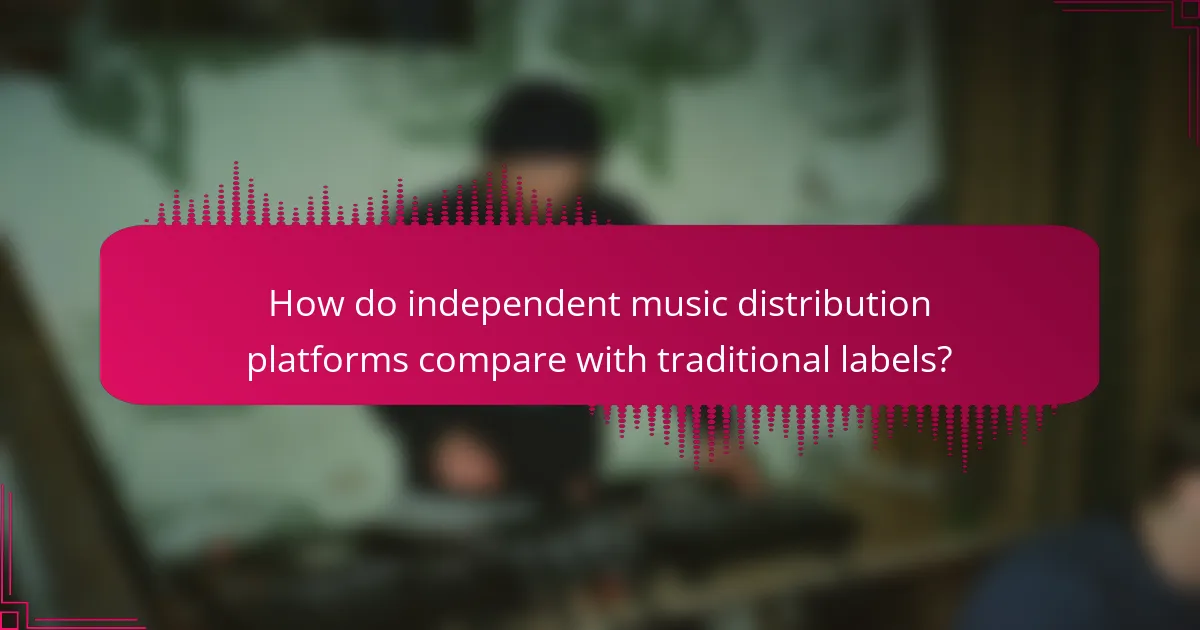
How do independent music distribution platforms compare with traditional labels?
Independent music distribution platforms offer greater flexibility and higher revenue shares compared to traditional labels. Independent platforms typically allow artists to retain more control over their music and distribution processes. Traditional labels often require lengthy contracts and take a significant percentage of earnings, limiting artists’ financial benefits.
Independent platforms usually charge a flat fee or a smaller percentage of sales, which can lead to higher overall income for artists. Moreover, they provide tools for direct fan engagement and marketing, which can enhance an artist’s reach. In contrast, traditional labels provide extensive promotional resources but often at the cost of creative control and ownership.
Ultimately, the choice between independent platforms and traditional labels depends on an artist’s priorities regarding control, revenue, and support.
What are the primary advantages of using distribution platforms over record labels?
Independent music distribution platforms offer several advantages over traditional record labels. They provide greater control over distribution, allowing artists to retain ownership of their music. Additionally, these platforms often have lower fees and faster payout times, enabling artists to receive revenue more quickly. They also allow for wider reach across various streaming services without the need for extensive contracts. Finally, independent platforms typically offer more flexible marketing tools, empowering artists to promote their work effectively.
How do costs differ between distribution platforms and traditional music deals?
Costs for distribution platforms are generally lower than traditional music deals. Independent music distribution platforms often charge a flat fee or take a small percentage of sales, while traditional deals may involve higher upfront costs and revenue splits. Additionally, platforms provide more transparency in earnings. Traditional deals can include complex contracts with hidden fees, leading to greater financial uncertainty for artists.
Which platform features are critical for artists transitioning from labels?
Critical features for artists transitioning from labels include user-friendly interfaces, robust analytics, flexible royalty structures, and wide distribution networks. These features empower artists to maintain control over their music, understand audience engagement, and maximize revenue potential. Additionally, platforms offering direct-to-fan sales and marketing tools enhance visibility and foster deeper connections with listeners.
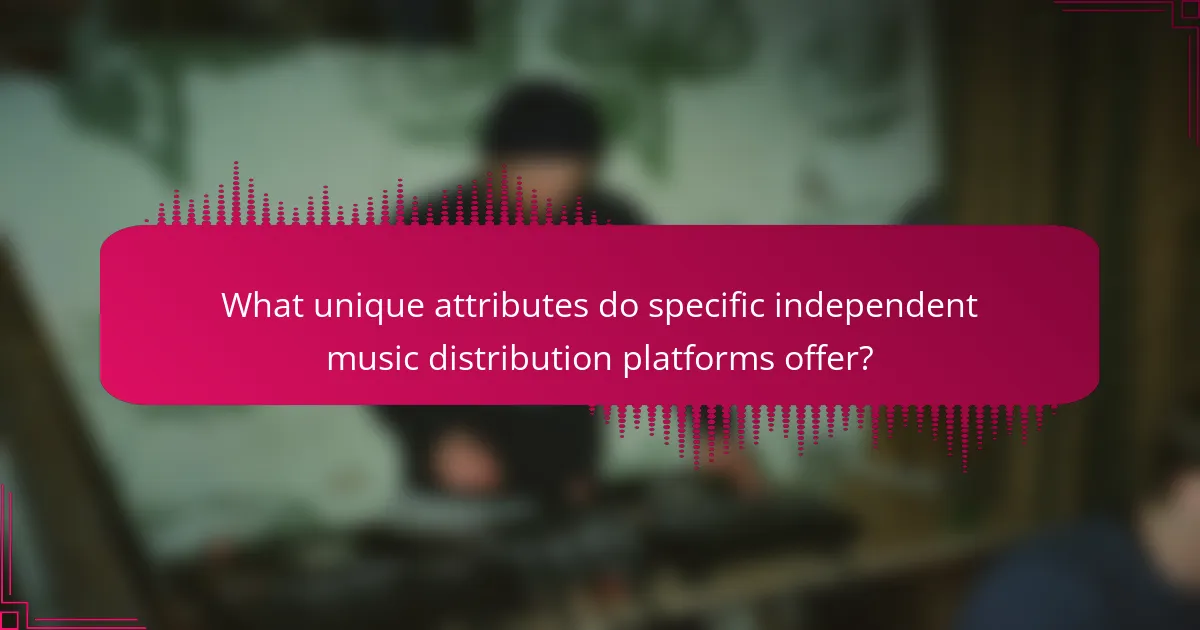
What unique attributes do specific independent music distribution platforms offer?
Independent music distribution platforms offer unique attributes that set them apart. These include tailored marketing tools, customizable release options, and niche audience targeting. For example, some platforms provide advanced analytics to track listener engagement, while others focus on specific genres or regional markets. Each platform’s unique features cater to different artist needs and distribution strategies.
How does platform specialization affect artist choices?
Platform specialization significantly influences artist choices by aligning distribution features with specific musical genres and target audiences. Artists select platforms based on unique attributes such as genre focus, audience reach, and monetization options. For instance, a platform specializing in electronic music may offer tailored promotional tools, while one focused on indie artists might provide more personalized support. As a result, artists can optimize their distribution strategy to enhance visibility and engagement within their niche. This specialization ultimately shapes their creative decisions and marketing approaches.
What innovative features are emerging in the distribution landscape?
Innovative features in independent music distribution platforms include advanced analytics, automated royalty tracking, and enhanced promotional tools. These features improve artist visibility and streamline revenue management. Platforms are increasingly integrating AI for personalized marketing and audience targeting, making distribution more efficient. Additionally, blockchain technology is emerging to ensure transparent transactions and copyright protection.
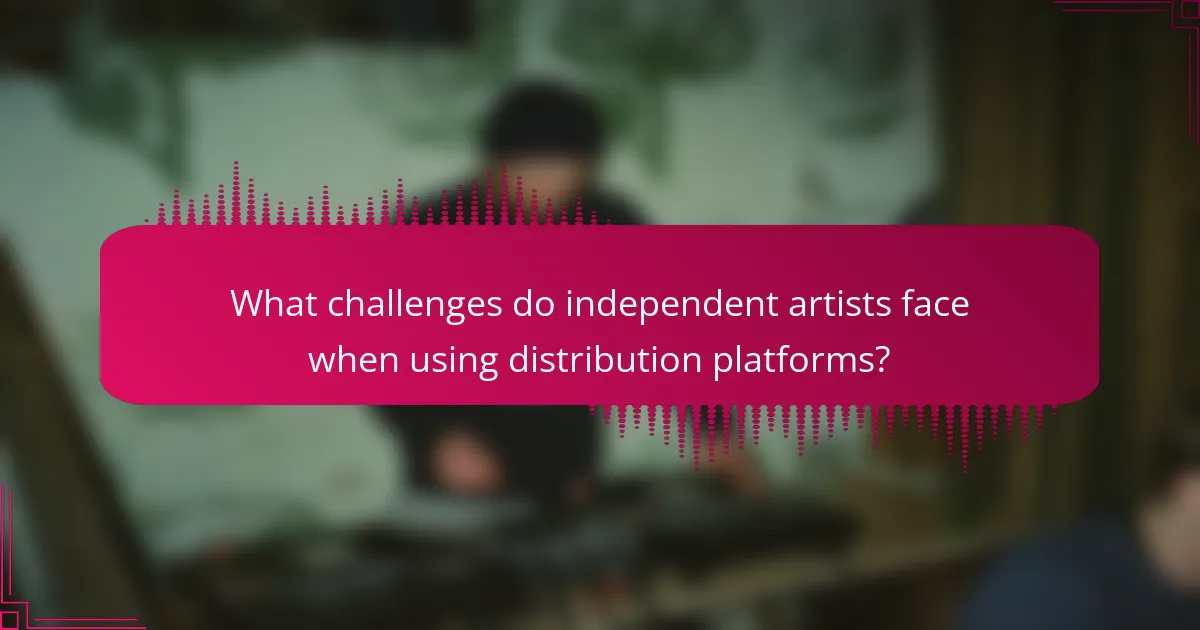
What challenges do independent artists face when using distribution platforms?
Independent artists face significant challenges when using distribution platforms, including high fees, lack of transparency, and limited marketing support. These issues can hinder their ability to reach audiences effectively. High distribution fees can cut into artists’ earnings, making it difficult to sustain their careers. Additionally, many platforms lack clear information about revenue splits, complicating financial planning. Limited marketing tools provided by these platforms can restrict artists’ visibility in a crowded marketplace.
How can artists navigate common pitfalls in digital distribution?
Artists can navigate common pitfalls in digital distribution by choosing the right platforms and understanding their features. Selecting platforms with transparent pricing and comprehensive analytics helps avoid unexpected costs and maximizes reach. Additionally, artists should actively promote their music across social media to enhance visibility. Understanding copyright and licensing is crucial to prevent legal issues. Regularly reviewing distribution agreements ensures artists maintain control over their work. Finally, leveraging user feedback can guide improvements in their distribution strategy.
What are the limitations of various distribution platforms?
Independent music distribution platforms have various limitations, including limited reach, high fees, and complex royalty structures. Some platforms may lack marketing support, while others impose strict content guidelines. Additionally, distribution speed can vary, affecting release timing.

What are the best practices for maximizing success on independent music distribution platforms?
To maximize success on independent music distribution platforms, focus on strategic marketing, audience engagement, and analytics. Utilize social media to promote releases and connect with fans directly. Leverage platform analytics to track performance and refine strategies. Collaborate with other artists to expand reach and explore various distribution services for optimal exposure.
How can artists effectively market their music through these platforms?
Artists can effectively market their music through independent distribution platforms by leveraging unique features and benefits. Utilizing platforms like DistroKid or TuneCore allows artists to reach global audiences while retaining control over their music. Key strategies include optimizing profiles with engaging visuals, utilizing social media integrations, and analyzing performance metrics to refine marketing efforts.
Engaging directly with fans through these platforms fosters community and loyalty, enhancing overall visibility. Additionally, platforms often provide tools for playlist placements, which can significantly increase streaming numbers. By focusing on these attributes, artists can create a robust marketing strategy that maximizes their reach and impact.
What strategies can enhance visibility and engagement on distribution platforms?
To enhance visibility and engagement on independent music distribution platforms, artists should focus on strategic promotion, audience interaction, and platform optimization. Utilizing social media for targeted campaigns increases reach. Collaborating with influencers can drive engagement. Regularly updating content keeps audiences interested. Leveraging analytics tools helps in understanding audience preferences. Engaging with fans through live streams fosters community.
What common mistakes should independent artists avoid in digital distribution?
Independent artists should avoid several common mistakes in digital distribution. Failing to choose the right platform can limit reach and revenue. Neglecting metadata can hinder discoverability on streaming services. Not understanding royalty structures may result in lost earnings. Overlooking promotional strategies can reduce audience engagement. Ignoring analytics prevents informed decision-making about future releases.

